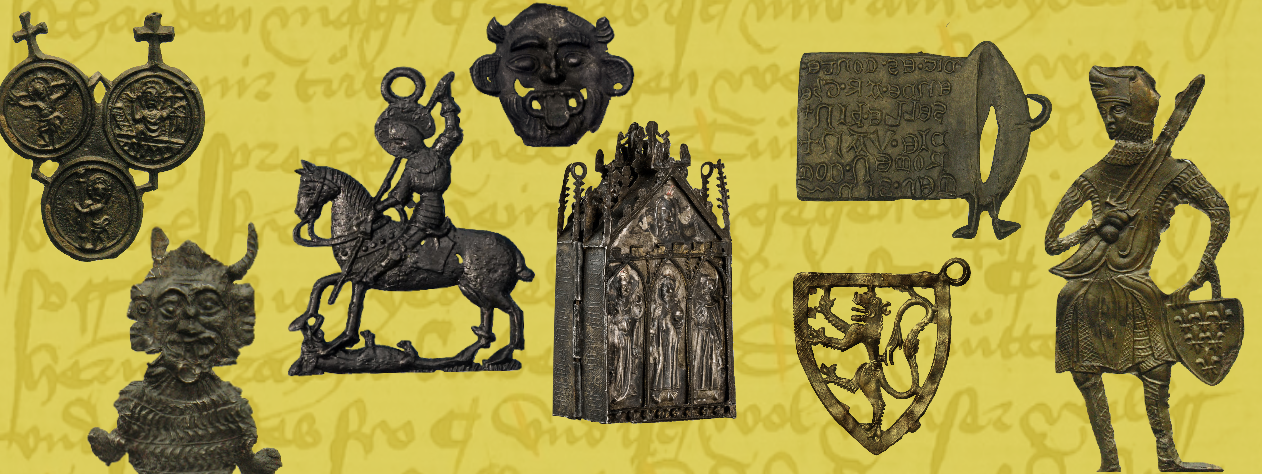Westminster Abbey. Photo courtesy of Sara Fontes
In 1420, the Vicar Richard Caistor of Saint Stephen’s died. Upon his death the locals wanted to make him a saint. Why did they want to honour him in this fashion? He was known to be a knowledgeable man who was pious and radical; perhaps he was also charismatic. For whatever reason, a cult sprang up around his tomb.
People went on pilgrimage to Saint Stephen’s and bought special souvenirs there. One version of the Caistor badges showed him preaching in a pulpit with a dove whispering into his right ear. Caistor is framed by a hexagonal scroll that is inscribed with the words ‘Mr Cast of Norwich’ and decorated with exterior crockets. In June, 2018, I had the amazing opportunity to handle this badge up close and personal at Lynn Museum. It was fascinating to see and hold something that was so old and connected to the locale of King’s Lynn.
Tin Lead Alloy, Richard Caister as priest standing in pulpit, Holy Ghost in shape of dove at one side of his head framed in pentagon shape scroll [MR CAST OF NORWICHE], Saint Stephen’s, 1420-1599, found in the Purfleet Quay, 400 x 400 mm. King’s Lynn, Lynn Museum, PB 86 (Kunera 07528). Photo courtesy of Sara Fontes.
At first, this badge aroused my curiosity because of the tiny dove whispering into Caistor’s ear. I wondered what the dove was inspiring him to talk about. The more I learned about the history behind this badge, the more it intrigued and puzzled me. Why did the locals want to make Caistor a saint of the Roman Catholic church? What made him so special? He was a local man, and popular enough to be chosen by the populace for sainthood. He is said to have been very devout; perhaps he inspired religious devotion in others. Another reason might have been to increase regional interest in the town and so increase trade and pilgrim visits. Why should another town benefit when King’s Lynn had such an amazing vicar? And yet, the bid to have Caistor made a saint failed. I wondered about that, too. This tiny object has quite a story to tell about popular religious culture in fifteenth-century England.
Written by Sara Fontes and Jana Köpcke.
Works Cited
Spencer, Brian. Medieval Pilgrim Badges from Norfolk (Hunstanton: Witley Press, 1980).
Tanner, N.P. The Church in Late Medieval Norwich, 1370-1532 (Toronto: Pontifical Institute of Mediaeval Studies, 1984).
Webb, Diana. Pilgrimage in Medieval England (London: A&C Black, 2000).


![Tin Lead Alloy, Richard Caister as priest standing in pulpit, Holy Ghost in shape of dove at one side of his head framed in pentagon shape scroll [MR CAST OF NORWICHE], Saint Stephen’s, 1420-1599, found in the Purfleet Quay, 400 x 400 mm. King’s Lyn…](https://images.squarespace-cdn.com/content/v1/5b916f765b409bcdde473c07/1547737746136-Z5OHEOLGYY0PIRFA0Y6U/MVIMG_20180626_130659.jpg)


